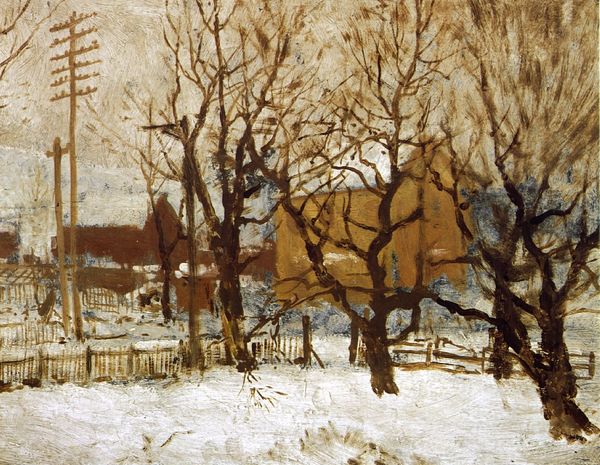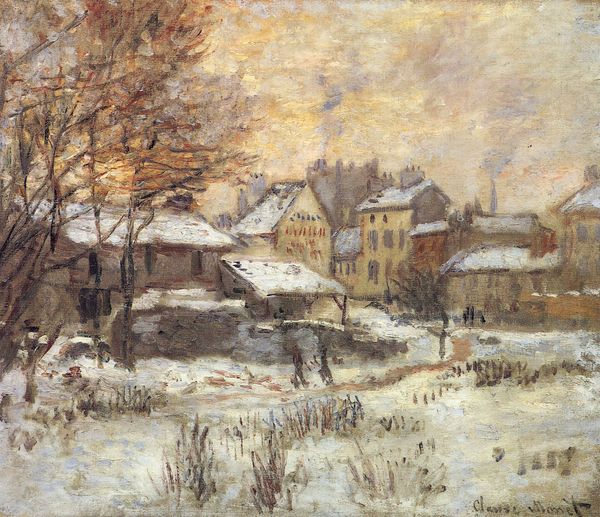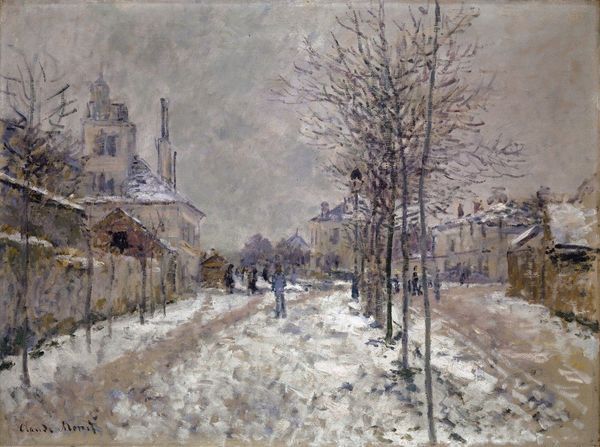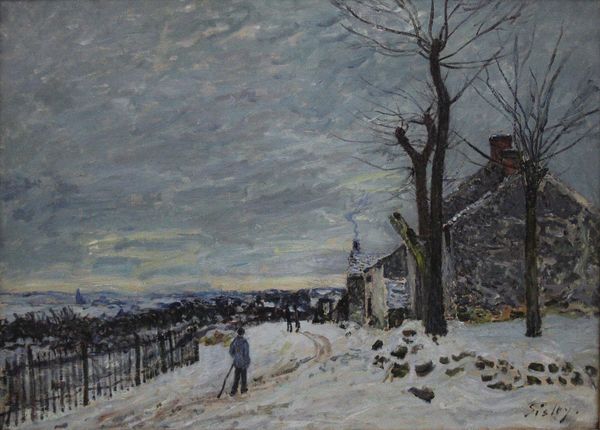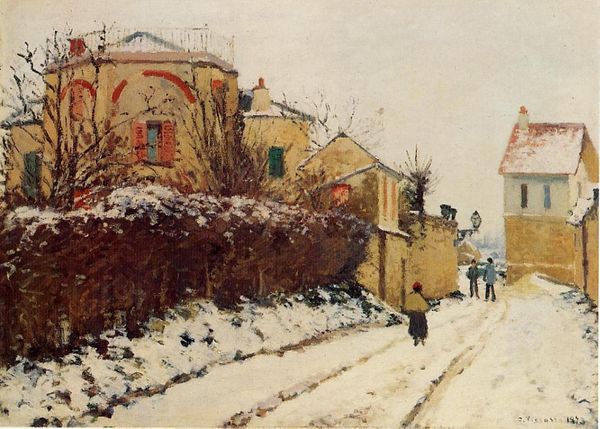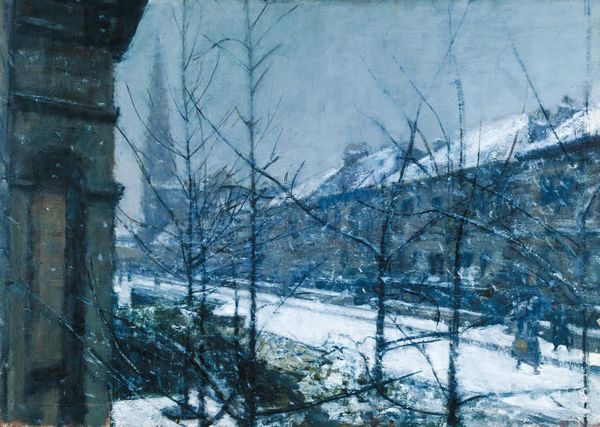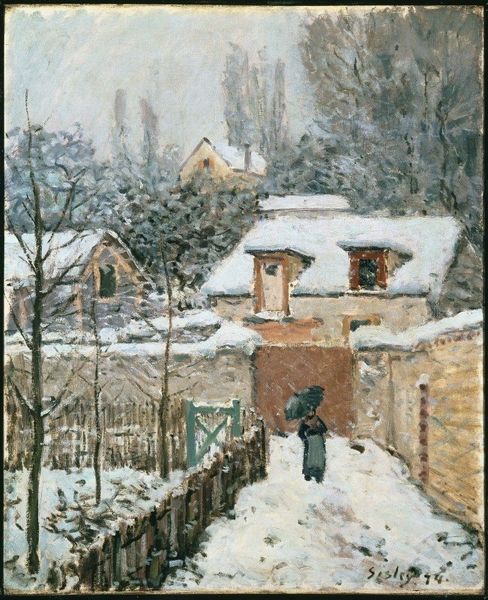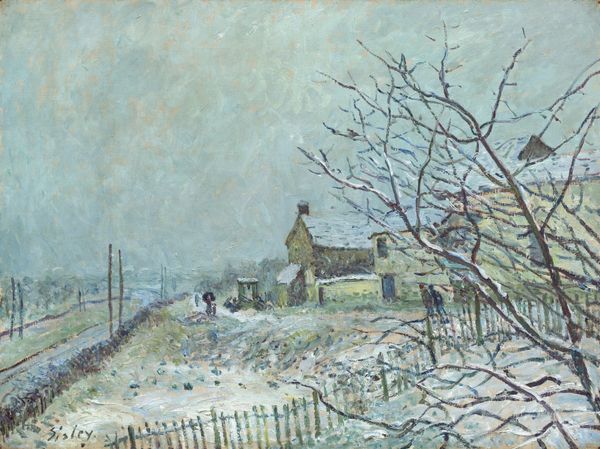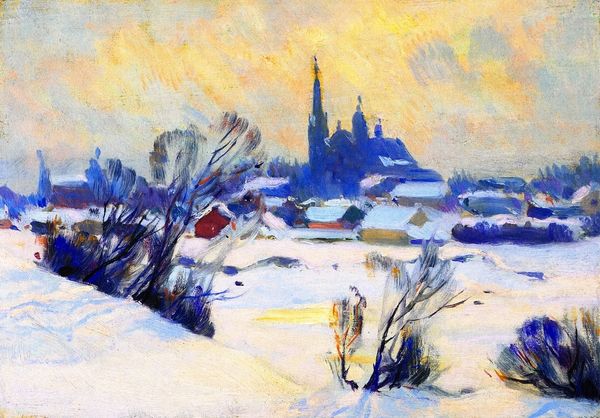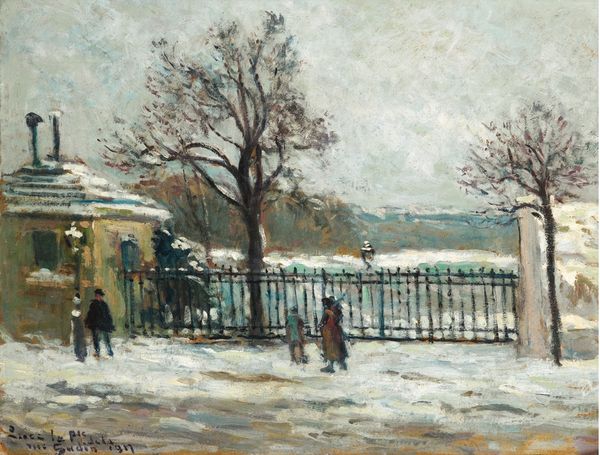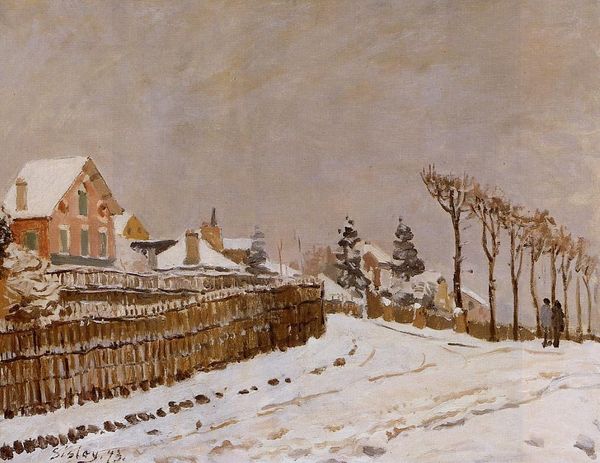
painting, plein-air, oil-paint, impasto
#
snow
#
painting
#
impressionism
#
impressionist painting style
#
plein-air
#
oil-paint
#
landscape
#
winter
#
impressionist landscape
#
oil painting
#
impasto
#
cityscape
#
realism
Copyright: Public domain
Curator: Looking at Monet's "Vetheuil, The Church in Winter" from 1879, I'm immediately struck by how cold it feels. Can you almost feel the dampness? Editor: I do! It’s an austere palette. The weight of the snow almost seems to suppress color and vitality. The canvas feels hushed, the brushstrokes like a whispered secret. The redness of that little pagoda stands out as such a burst of joy against this solemn, monochrome landscape. Curator: Absolutely. This piece comes from a really tumultuous period in Monet’s life – personal tragedy, financial struggles, the usual artist tribulations, right? Knowing that, seeing this muted landscape…it resonates differently. Editor: I agree. One reads the sociopolitical context too: think of the late 19th century’s radical reshaping of society due to industrialization and urbanization. Consider its impact on religion and the alienation of the human soul. What does the image of a church buried under a blanket of snow signify in this broader context? Curator: Good question! It feels so deliberately ordinary too, in a way that’s so subtly revolutionary. Think of academic painting’s focus on grand historical subjects, and then Monet presents us with…a snowy village scene. Made with short strokes, this impasto technique he was perfecting gives the snow that chunky look that really speaks volumes. Editor: Monet's almost aggressively ignoring those academic conventions, pushing the boundaries of acceptable subject matter. It's interesting to consider how a seemingly simple landscape embodies such a radical artistic agenda. But I also wonder if these village landscapes provide the painter a necessary safe space from modernity. Is Monet simply staging an escapist idyll? Curator: Perhaps it is escapist. But it is his personal truth shown with his unique sensitivity. Now I am drawn into the picture so much more because I wonder if I might also share such a vision on a winter day, perhaps, one day soon! Editor: I'm taking with me a renewed understanding of this artist's persistent commitment to expanding our understanding of place and experience and perception in relationship to modernity. Curator: Agreed, and maybe, just maybe, next time I shovel snow, I'll try to see it with a little more Monet-inspired awe.
Comments
No comments
Be the first to comment and join the conversation on the ultimate creative platform.
